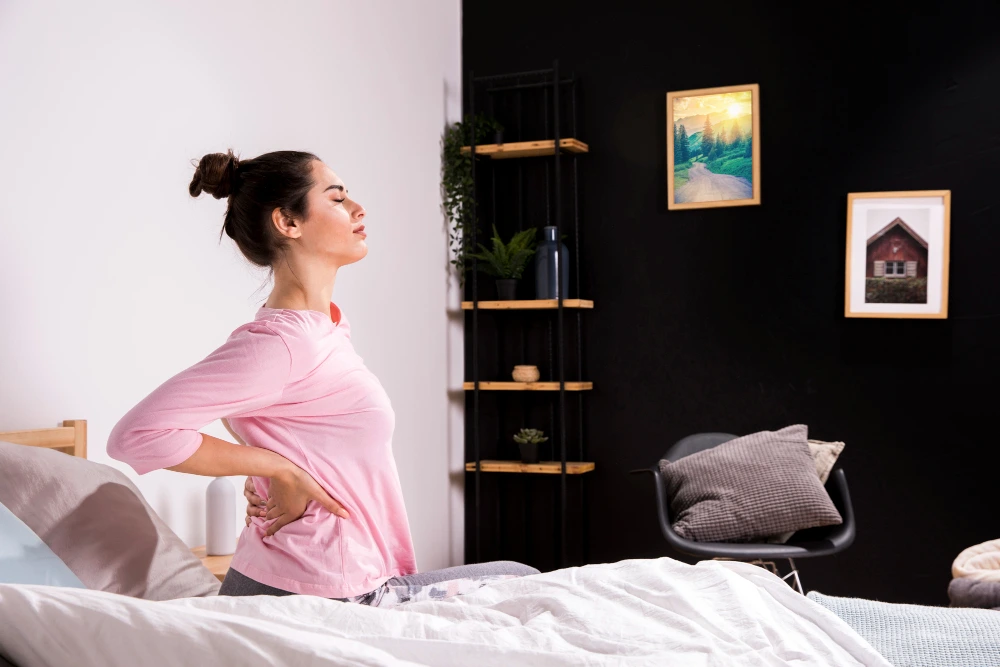Best Exercises For Lumbar Radiculopathy
Best Exercises For Lumbar Radiculopathy target the mechanisms behind leg dominant pain instead of chasing general flexibility. The emphasis is directional loading that centralizes symptoms toward the spine, restoration of segmental lumbar motion, and hip mechanics that let the pelvis sit neutral during walking and sit to stand transitions. Mobility work re introduces painless motion to irritated segments, flexibility focuses on tissues that tug on the lumbar pelvis complex, and stability builds low load endurance so improved motion holds during daily tasks.
Sessions are brief and repeatable, using calm nasal breathing and smooth pacing to keep neural sensitivity quiet. Progress is tracked by fewer leg symptoms, longer comfortable walking or sitting intervals, easier rising from a chair, and faster recovery after activity. When the exercise sequence is aligned with diagnosis driven Chiropractic care, results tend to accumulate reliably, producing steadier posture, more efficient movement, and less end of day fatigue without relying on forceful stretching or high effort drills.
What Lumbar Radiculopathy Is And Why Exercise Helps
Lumbar radiculopathy describes irritation or compression of a lower spine nerve root that produces leg dominant pain, tingling, or weakness in a predictable pattern. Exercise supports recovery by improving joint glide, easing protective muscle guarding, and encouraging centralization, the shift of symptoms from the leg toward the lower back that signals progress. The Best Exercises For Lumbar Radiculopathy leverage gentle cyclic motion to nourish discs, refine motor control, and reduce mechanical stress so daily tasks become easier within a structured plan that complements Chiropractic care.
Exercise Guidelines For Lumbar Radiculopathy
Exercise success comes from consistency, measured loading, and objective markers of change rather than forceful stretching. The Best Exercises For Lumbar Radiculopathy follow two simple pillars: respect pain limits that prevent symptom spread and use a steady progression that builds tolerance without setbacks. These rules keep sessions productive and aligned with diagnosis driven Chiropractic care.
Movement Rules And Pain Limits For Lumbar Radiculopathy Exercises
Movements remain slow and controlled, with ranges kept in a comfortable zone. Short lived muscular effort in the lower back is acceptable if leg symptoms remain stable or decrease, but sharp pain, prolonged tingling, new numbness, or increasing weakness stops the drill. Positions that centralize symptoms are favored, whether that means a gentle extension bias when standing eases pain or a gentle flexion bias when sitting gives relief. Breathing stays even and the abdomen remains softly engaged to reduce bracing that can irritate sensitive tissues.
Exercise Frequency And Progression For Lumbar Radiculopathy
Begin with one brief session daily. Add a second short session once the routine is tolerated for several days without increased leg symptoms. Progress by lengthening stretch holds slightly, adding a small number of repetitions to mobility drills, or introducing a second set to stability work. The direction is confirmed when walking or sitting tolerance improves and post session recovery is quick. If several sessions in a row worsen leg symptoms, reduce range or volume before advancing again.
Mobility For The Lower Back
Mobility drills restore smooth segmental motion without forcing end range. The Best Exercises For Lumbar Radiculopathy use easy cycles that reduce joint irritation and muscle guarding so nerve root sensitivity settles and functional movement returns.
Cat Camel
Set up on hands and knees with a neutral spine. Slowly round the back from pelvis to mid spine while breathing out, pause briefly, then ease into a gentle arch while breathing in. Complete eight to ten unhurried cycles. The goal is fluid motion through the lumbar segments rather than end range bending.
Pelvic Tilt
Lie on the back with knees bent and feet flat. Exhale and draw the lower abdomen inward, then tilt the pelvis to lightly flatten the lower back to the floor. Hold three to five seconds, relax, and repeat ten to twelve times. Subtle control is the priority, helping reduce shear at the irritated level and making sit to stand transitions easier.
Windshield Wiper Stretch
Lie on the back with knees bent and feet wider than hips. Let both knees move slowly to one side, pause, return to center, then move to the other side for ten to twelve smooth repetitions. Shoulders stay relaxed. Coordinated trunk rotation unloads the lumbar segments and decreases tension that restricts nerve glide.
Flexibility To Ease Nerve Irritation
Targeted flexibility reduces undue tension on the lumbar pelvis complex so sensitive roots can settle. The Best Exercises For Lumbar Radiculopathy keep stretches comfortable and avoid end positions that provoke symptoms below the knee.
Piriformis Stretch
Lie on the back and cross one ankle over the opposite thigh. Draw the legs toward the torso until a steady buttock stretch is felt on the crossed leg side. Hold twenty to thirty seconds, repeat two or three times, then switch sides. Keep the pelvis level to prevent twisting into the lower back.
Hamstring Stretch
Use a strap around the mid foot while lying on the back. Raise the leg with a slight knee bend and relaxed ankle until a mild stretch is felt behind the thigh. Hold twenty to thirty seconds, repeat two or three times per side. This version lengthens the hamstrings while limiting neural tension, helping the pelvis sit neutral during standing and walking.
Hip Flexor Stretch
Kneel with one knee down and the other foot forward. Tuck the pelvis under, then shift forward until a stretch is felt across the front of the hip on the kneeling side. Keep the torso tall and the back glute lightly engaged. Hold twenty to thirty seconds, repeat two or three times per side. Lengthening the front of the hip reduces lumbar compression during upright tasks.
Prayer Stretch Or Child Pose
From hands and knees, sit the hips toward the heels and reach the arms forward until a comfortable opening is felt through the lower back. Hold twenty to thirty seconds, repeat two or three times. This gentle flexion emphasis is useful when sitting relief is greater than standing relief and should remain easy without symptom spread.
Stability For Lasting Relief
Stability training builds endurance and control so improved motion translates into daily activity. The Best Exercises For Lumbar Radiculopathy emphasize steady patterns that protect sensitive segments during walking, lifting, and turning.
Bird Dog Exercise
Begin on hands and knees. Set a light abdominal brace and keep the pelvis level. Extend one leg straight back while reaching the opposite arm forward, pause three to five seconds, then return with control. Perform five to eight repetitions per side. If balance is challenging, practice legs only, then arms only, before combining. This cross body pattern reinforces spinal stability without heavy load.
Why Choose Ashburn Village Chiropractic
Diagnosis driven Chiropractic care for lumbar radiculopathy is provided at Ashburn Village Chiropractic by Dr Jonathan Solomon, the longest standing chiropractor in Ashburn with more than two decades of clinical experience. Each visit is with Dr Solomon, preserving continuity from evaluation through follow up. Credentials include a Doctor of Chiropractic degree earned cum laude from Life Chiropractic College, national board certification, and licensure by the Virginia Board of Medicine. Clinical processes begin with a thorough examination and a clear working diagnosis, then pair gentle adjustments and soft tissue methods with the exercise sequence outlined above. On site X ray is available when clinically indicated to clarify structural contributors. This combination of experience, consistent provider attention, and exercise integration supports safer, faster improvement for leg dominant pain.

